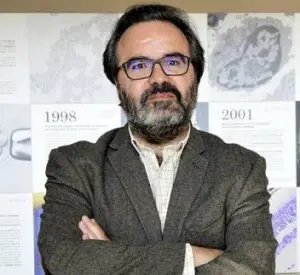HEALTH| 21.05.2021
Technologies and challenges: The combination of reading and editing techniques in the decade of genetics
In this, the second part of our interview with Lluís Montoliu—biologist and researcher for the CSIC at the National Center of Biotechnology, Chairman of that organization’s Ethics Committee, and coordinator of Genome & Epigenetics, Volume 3—he discussed genetics, ethics and epigenetics. He highlighted that, ever since CRISPR genetic editing tools exploded onto the scene, they have allowed us to do things we previously couldn’t dream of; that, looking forward, there is now a need for faster computers and bioinformatics algorithms; and that the combination of reading and editing techniques has made this the decade of genetics.
Between now and 2030, what challenges does the CSIC face in the field of genetics and epigenetics?
Within the field of genetics, we set out seven challenges in the book Genome and Epigenetics that I coordinated with Álvaro Rada Iglesias. These challenges are in anticipation of the technologies we’ll need in order to explore both the genome and that additional layer of information we call epigenetics. Epigenetics encompasses the complex ways that any one gene interacts with the other 20,000 in our genome, along with genetic switches that switch genes on and off, and allow us to explain illnesses that originate in an organism’s DNA or RNA. There are also other factors that contribute to keeping us healthy, such as the microbiota [also known as gut flora], diet, aging and so on; we’re interested in the whole genome.
 What are the main technologies you’re using, and how has your work changed over the last 30 years?
What are the main technologies you’re using, and how has your work changed over the last 30 years?
In the last decade, the revolution has been ushered in with the latest Nobel Prize in Chemistry and the explosion of CRISPR genetic editing tools onto the scene that allow us to do things we previously couldn’t dream of. We can now read our genome and that of animals and plants, and what’s more, we can modify it. We can place an A where a T used to be, we can change a G to a C, as if we were editing a text in a word processor. This is a revolution that, at the biological level, has already proved a triumph in the lab: We are now able to devise models in our research on illnesses. And that’s before we get to its application for gene therapy, modifying any genetic mutations and restoring them to the correct sequence. This is one of the techniques at the very cutting edge. In addition, sequencing techniques have increased dramatically. We are now able to achieve sequencing of a whole genome in a matter of hours and at an affordable price, although we still need a few days to organize the 3 billion base pairs we have in each one of our cells. We need to develop increasingly fast computers and bioinformatics algorithms capable of processing this vast amount of information and presenting it to us in a way we can understand.
The combination of reading and editing techniques has made this the decade of genetics, and for that reason the CSIC decided that one of the challenges we set ourselves had to be in the area of the genome and epigenetics. It’s very important for us to understand more about these mutations that can occur in some parts of the genome that switch off or reactivate certain genes, because many of them play a big role in causing illnesses and they are reversible. We now know, and this is very new, that these modifications occur not only in the genome, but also in messenger RNA. mRNA is the molecule that acts as an intermediary between our DNA in the cell nucleus and the proteins that need to be synthesized outside the nucleus, in the cytoplasm. These RNA molecules can also be modified, meaning they can make the difference between good health and a pathological state.
As Chairman of the CSIC’s Ethics Committee, how important are ethical considerations when it comes to genetic manipulation and epigenetics?
Ethics must permeate any scientific endeavor. Like any group, we have a code of ethics, which tells us what we can and cannot do. In relation to others, animals, plants and the environment, there is a legislative body. This means that before any project—however interesting it may seem to us—is put into practice, it must be of sufficient quality and must be reviewed by an ethics committee, which will establish whether it can be approved only after assessing the possible dilemmas that the project may encounter. For example, whether experiments would need to be carried out on animals as part of the project, to be sure that this is strictly necessary. We must employ the fundamental principles of bioethics: do no harm, do good, obey the principles of personal autonomy and fairness, guarantee the safety of treatment, explain to people what is going to happen and ask for their informed consent. And the most important consideration: that everything we aim to resolve is relevant to all, the principle of fairness, that it is affordable and accessible to the whole planet. In the case of the current pandemic, either we come up with a cure that can be used the world over, or we don’t come up with a cure. That’s what underpins the WHO’s COVAX strategy.
